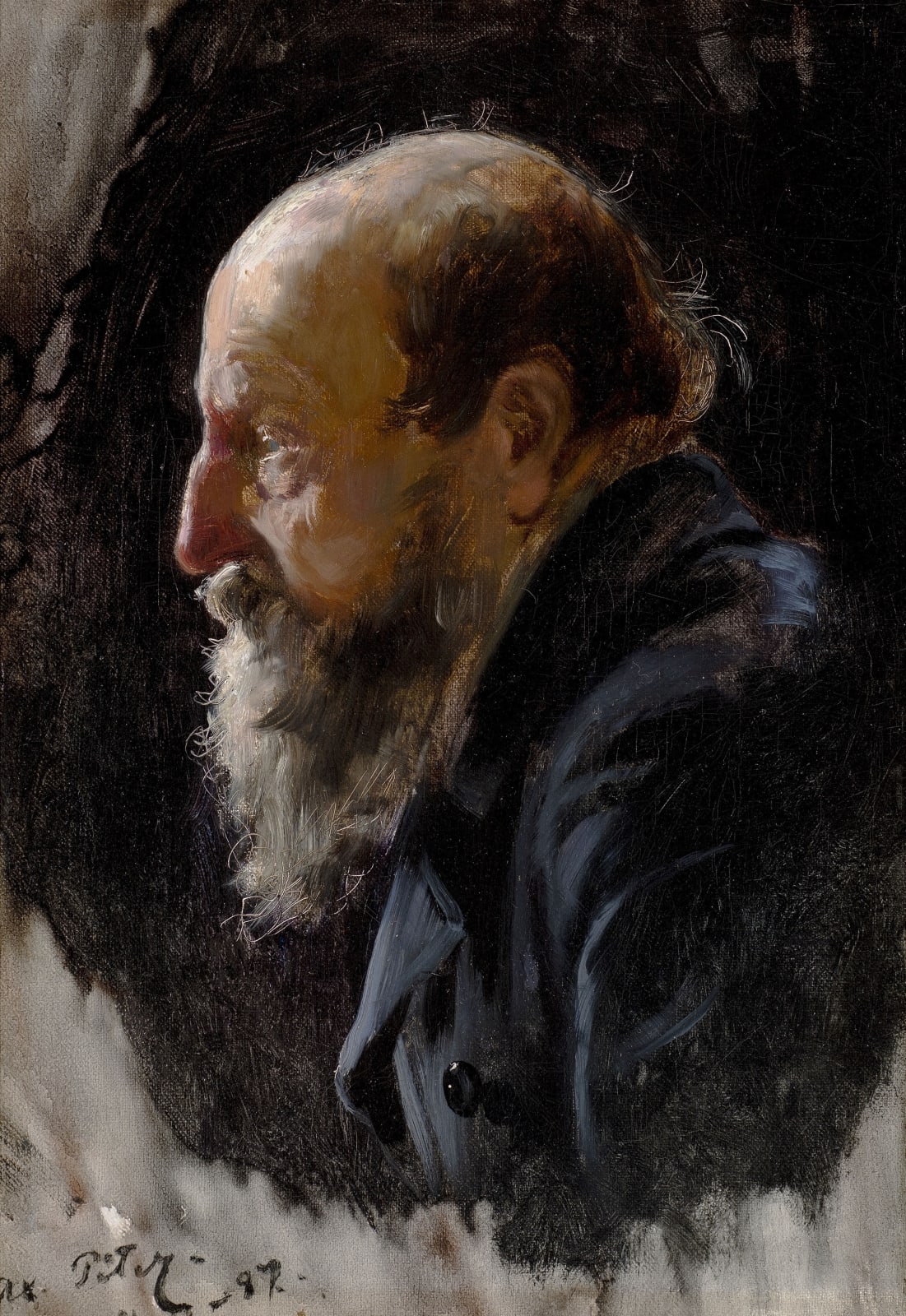Axel Peter (1863 – 1942)
Study of a bearded man in profile
Signed and dated lower left: Peter . 87
Oil on canvas
35.3 x 24.7 cm. (13 ¾ x 9 ¾ in.)
Study of a bearded man in profile
Signed and dated lower left: Peter . 87
Oil on canvas
35.3 x 24.7 cm. (13 ¾ x 9 ¾ in.)
Axel Peter’s study of a bearded man in profile is pure painting of the very best kind, demonstrating the exceptional technical abilities of a young artist in full flow. Rather than being a strict portrait, the painting is more likely a rapid sketch of a paid model executed in the artist’s Stockholm studio, sometime during the winter of 1887 to judge from the sitter’s heavy coat. The forms and volumes are picked out with seemingly spontaneous brushstrokes and highlights, with the sparkling button being a particular tour de force. The model’s face glows, probably illuminated by direct sunlight pouring into Peter’s studio from a skylight. Particularly virtuosic and satisfying is the way Peter has used the end of his brush to incise the fine hair at the edges of the beard and head, emphasising their luminescence.
Peter is primarily known for his technically accomplished, though entirely forgettable, still life production, dating from the late 1890s onwards. His best work, however, dates to the 1880s and early 1890s, a time when the young artist, perhaps in a more experimental stage, focussed on free-flowing studies and portraits. In the present work, it is not going too far to say that in terms of pure painterly ability, Peter rivals Anders Zorn, Sweden’s most celebrated artist during the late 19th century. Interestingly, Zorn, who would certainly have known Peter, only took up oil painting in 1887 (fig. 1), the year of this study. Potentially Zorn’s decision was taken in response to seeing this type of painting: certainly, the two artists shared a technical virtuosity in oils.
Fig. 1, Anders Zorn, Emma Zorn reading, 1887, oil on panel, Zorn Museum
Fig. 2, Axel Peter, Old Man 1884, pencil on paper, Nationalmusuem, Stockholm
Peter studied at Royal Swedish Academy of Fine Arts between 1881 and 1883. He then moved on to study under Edvard Perséus at his private academy in Stockholm, alongside other leading artists of his generation like Oscar Björck. When Perséus was appointed to look after Oscar II’s art collection, he handed over his school to Peter, who ran it until 1892. During the 1880s and 1890s Peter exhibited regularly in Sweden and joined the Artist’s Club in 1891 and the Swedish Artist’s Association in 1892.
A pencil study by Peter from 1884 in the Nationalmuseum depicts a heavily be-whiskered old man with a prominent nose (fig. 2). This is potentially the same sitter as our oil sketch, perhaps an off-duty fisherman or dockworker moonlighting as an artist’s model.
